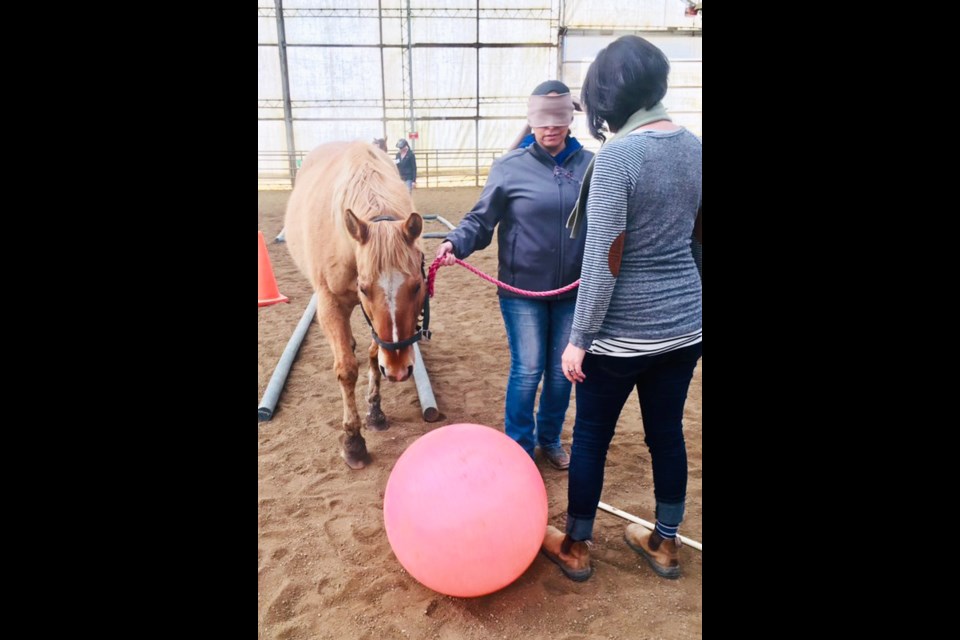The English Language Learners Dictionary describes horse sense as the “ability to make good judgments or decisions; common sense”. For Teresa Johnston, there is so much more. With over 30 years of experience with horses, her love of horses has shaped the person she is today. Recently she has taken that passion, the things she has learned herself working with them, and the desire to share that knowledge with others. Ěý
Horses are a prey animal, their very survival relying upon physical traits. Their ears move independently of each other, one can face forward, listening to whatever is going on there, while the other could face off to the side or to the rear of the animal, listening for danger behind them. Their eyes are located on the sides of their heads, rather than in the middle, allowing them to see a much larger angle, and their necks can increase that field of vision even more.Ěý Horses are honest communicators, using their ears, tail and body to let you know how they are feeling. They are also very sensitive to emotions, so a handler’s frustration will be echoed in the horse itself.Ěý
In 2002, Johnston was working as a school bus driver and noticed how much the children on that bus loved their horses, and how many of them needed more in their lives. In 2008 she took an Equine Assisted Learning course through Cartier Farms in Prince Albert SK, but because she was struggling with some health issues and raising young children, she was unable to make her dream happen.Ěý She took more courses in 2009, 2012 and in 2018 she recertified, wanting to make use of the new indoor arena at Rising Hope Ranch just outside of Arcola, SK.Ěý Since then she has collected props for the obstacle courses, planned youth programs, corporate workshops, and Kids Day Camp.Ěý
Working with the horses is an experiential learning experience, where two or three people work with the horse, learning to work together, using only their hands, or their voices depending on the task set before them.Ěý The Youth Program spans 12 weeks, and each lesson builds on the previous lesson. The participants learn to feel comfortable with the animal; brushing them, moving the horse using their hands, the reins, the lead rope. For a student who is fearful in the beginning, this is empowering, and the skills used in the arena can be applied to real life. For many people it is an entirely new learning experience, working in a barn with an animal much larger than themselves.Ěý Students learn that if you pull the reins too hard, too often, or take their frustration out on the animal, there are consequences.Ěý The horse will eventually forgive the actions, if they are followed with new behaviours. The student learns new behaviours, empathy through discovering how the horse reacts to the different situations, and can then take that new skill set into their personal life.Ěý Horses don’t take offense, teaching students that when you are patient and kind things go well, but if you react in anger, the animal is confused and things don’t go well at all. Ěý
EAL can help people who are autistic or at risk, those in need of team building, and even marriages. It aids personal development, relationship awareness, spiritual development, self-acceptance, responsibility, respect for others, social skills, assertiveness, increases self-esteem, positive change and helps in recovery. There are also grants available to help with some of the costs involved. If you are interested in learning more about EAL check out the website @ rhrsk.com or contact Teresa Johnston on her cell at 306-577-7316.
Ěý




